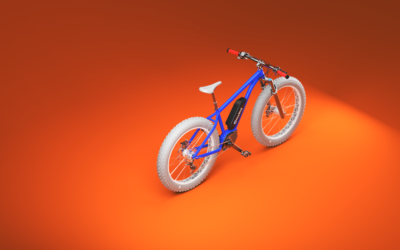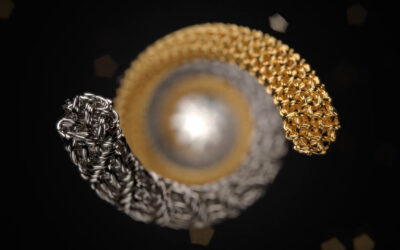KeyShot has all the features that allow you to capture your scene just as you would with a real-world camera. Its ability to add depth to a scene is no different and, it’s a whole lot easier. KeyShot’s Depth of Field (DOF) camera settings is a simple, powerful option to bring another level of realism to your product shots. Let’s have a look at how to use it.
Depth of Field
In its most basic sense, depth of field is the zone of acceptable sharpness within an image that appears in focus. This zone varies from photo to photo, some have a very small zone of focus which is known as a shallow depth of field, while others may have a large zone of focus which is known as a deep depth of field. Essentially there are three main factors that control the depth of field: distance from subject, focal length, and f-stop. Now, let’s see how this translates to KeyShot.
1. Orient Your Camera
To get started you’ll want to orient your camera to frame your subject as desired. Do this with your mouse by clicking and dragging the Left Mouse Button to rotate and the Scroll Wheel to zoom in or out or by adjusting the various sliders in the Position and Orientation section of the Camera tab.
2. Activate Depth of Field
KeyShot’s depth of field settings is located in the Camera tab of the Project window. Just below the Lens Settings and Stereo options, you’ll see the Depth of Field options. When you activate Depth of Field, by clicking the checkbox, you’ll notice two settings, Focal Distance and F-stop.
If you are familiar with cameras and photography, then these two settings should be very familiar and intuitive for you to use. Simply put, Focal Distance is the distance from the camera to where the image is the sharpest and F-stop adjusts the virtual aperture of the camera to determine the extent of the area that is in focus.
3. Adjust Focal Distance
To set a proper DOF for your product shot, first change the Focal Distance by adjusting the slider or by clicking the target icon and then selecting the point on your model (or in your scene) that you’d like to focus on. This quickly sets the focus for the camera.
4. Adjust F-stop
Next, change the F-stop to a value that gives you the desired amount of focus and sharpness. Typically, if your subject is closer, you’ll use a lower F-stop number but this also depends on whether you are going for a shallow depth of field or a deeper depth of field.
Using the depth of field settings not only help isolate your subject creating a point of interest but can also help you draw attention to specific features or design elements. It can also help with dramatic effects such as creating Bokeh within your KeyShot scenes. To learn more about Depth of Field check out the KeyShot Manual.
What Can You Create?
We would love to see what you create with this tip. Visit the KeyShot Amazing Shots forum to see what others are creating and share your own work. And if you have a suggestion for another tip share it in the comments below.







0 Comments